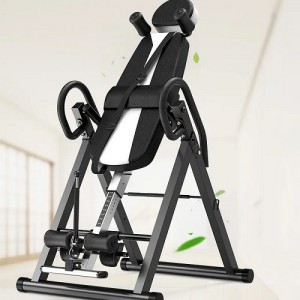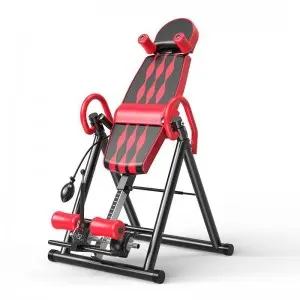In the field of fitness and health, a notable trend is emerging: handstand rehabilitation equipment, which was once exclusive to physical therapist clinics and professional rehabilitation centers, is now entering ordinary households at an unprecedented speed. This transformation is not merely a migration of products; it reflects the growing demand of modern consumers for proactive health management and their open-minded attitude towards innovative rehabilitation methods. For astute purchasers, perceiving the underlying market forces behind this trend means seizing an emerging market that is booming.
From Professional Therapy to family Health: Behind the Evolution of Demand
The handstand therapy itself has a solid theoretical and practical foundation. By altering the body’s axis of gravity, it helps relieve spinal pressure, promote blood circulation, and relax tense muscles and nerves. In the past, this therapy was mainly guided by professionals and was used to deal with specific back diseases or recovery after sports injuries. However, what drives it into the household market is the broader public health demands.
The sedentary office life, high-intensity work pressure, and the widespread pursuit of high-quality sleep and daily relaxation have led modern urbanites to generally face problems such as muscle stiffness, back pain, and poor circulation. Consumers are no longer merely content with “treatment after illness”, but are actively seeking “daily prevention and maintenance”. They are eager to transform professional rehabilitation concepts into convenient family health habits. This shift in concept from “passive treatment” to “active prevention” is the most fundamental driving force for the household use of handstand equipment.
Technological innovation and safety design: The Cornerstone of home Integration
The core technical prerequisite for professional equipment to enter households safely and conveniently is the significant improvement in security and ease of use. Early handstand devices might have been bulky, complicated to operate and carried certain risks. The new generation of products has achieved a key breakthrough in design:
Controllable progressive flipping: Modern household handstand devices have generally abandoned the “instant complete handstand” mode and instead adopted a design that can precisely adjust the Angle. Users can start with a slight backward tilt, gradually adapt, and eventually achieve a complete handstand. This progressive design significantly lowers the usage threshold and risks, allowing beginners to use it with peace of mind.
Multiple safety locking mechanisms: Household products integrate multiple safety measures, including safety locks, anti-slip foot pedals, and smooth hydraulic or electric assist systems. These designs ensure that users can remain stable at any Angle and can safely return to their initial position at any time.
Humanization and space optimization: Considering the home environment, the industrial design of the product pays more attention to aesthetics, compactness and ease of storage. The choice of materials is also more inclined towards a sense of luxury and durability, enabling it to blend naturally into modern home Spaces rather than resembling a cold medical device.
Expansion of market positioning: Diverse Values beyond Rehabilitation
To successfully expand into the family market, the positioning of the product must go beyond the traditional single dimension of “rehabilitation”. Today’s household handstand devices have diversified value demands:
Daily stress relief and mental relaxation: Brief handstands are believed to help calm the nervous system and provide more oxygen to the brain, thereby helping users quickly withdraw from daily stress and regain mental vitality. This positioning has attracted a large number of high-pressure working professionals.
Exercise recovery and performance improvement: For running and fitness enthusiasts, handstands are effective active recovery tools. It can help relieve muscle soreness after intense exercise, accelerate physical recovery, and thereby enhance long-term athletic performance. This group is an important target customer for household appliances.
Complementary to yoga and flexibility training: In the eyes of yoga practitioners, handstands are part of asana practice. Home handstand equipment offers them a safe and auxiliary way to practice, which helps improve their body’s flexibility and sense of balance.
Opportunities for purchasers
This transformation reveals a clear business logic for fitness equipment purchasers. The market for household handstand devices is at a crucial stage of penetrating from early adopters to the mass market. Its target customer profile is very clear: urban residents aged between 30 and 55, who pay attention to the quality of life, have a high level of education and health awareness.
Purchasing such products means that you are no longer merely providing a piece of hardware, but offering your customers an integrated solution that combines preventive health, daily stress reduction and exercise recovery. Your product line will thus be more innovative and forward-looking, effectively differentiating itself from traditional home fitness equipment and meeting consumers’ increasingly refined and high-end demands.
The shift of handstand rehabilitation equipment from clinics to households is a typical microcosm of the upgrading of health consumption. It represents consumers’ desire for professional-level health solutions and the possibility that technology can make these solutions safe, convenient and accessible. For purchasers committed to leading the market, paying attention to and introducing the new generation of household upside-down devices is not only a measure to enrich the product matrix, but also a strategic step in laying out the future healthy home ecosystem. This emerging market awaits visionary pioneers.
Post time: Oct-10-2025



